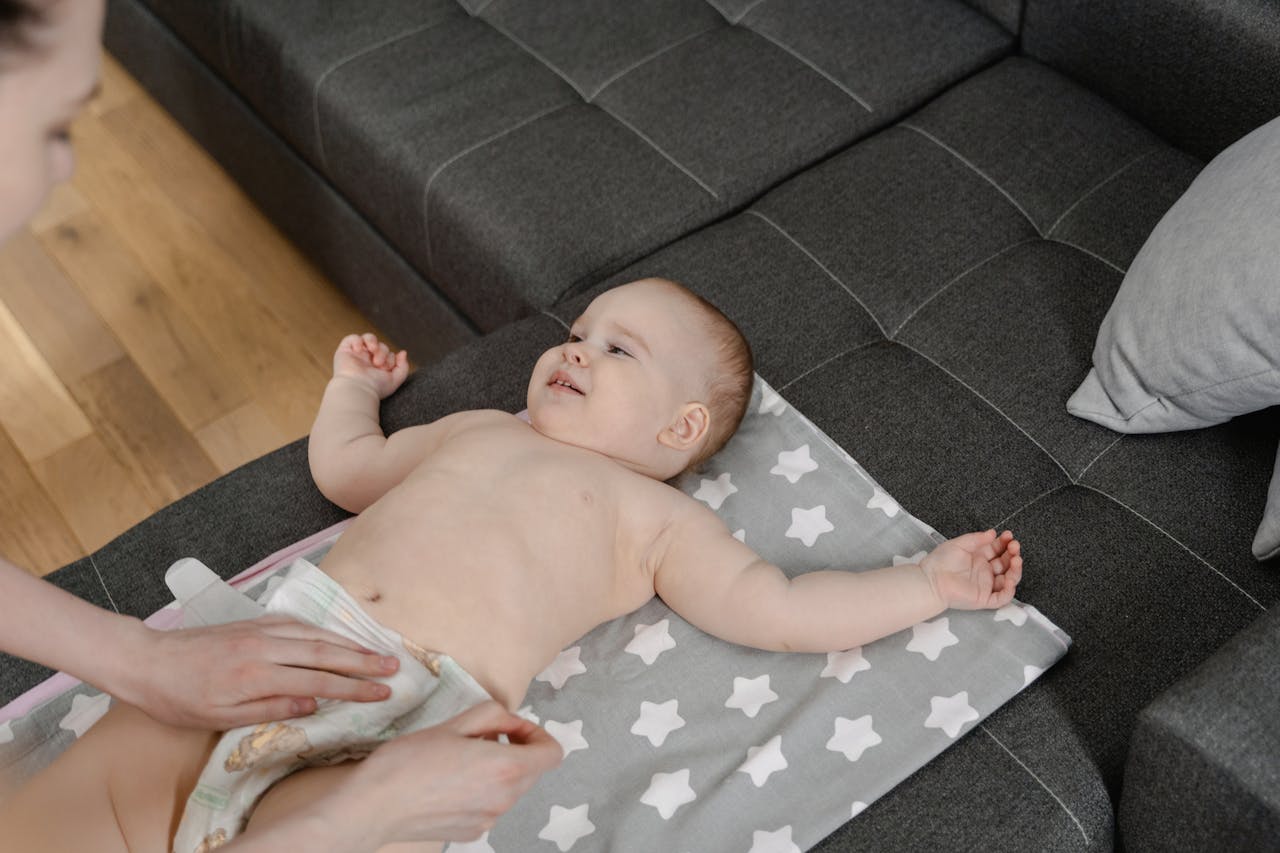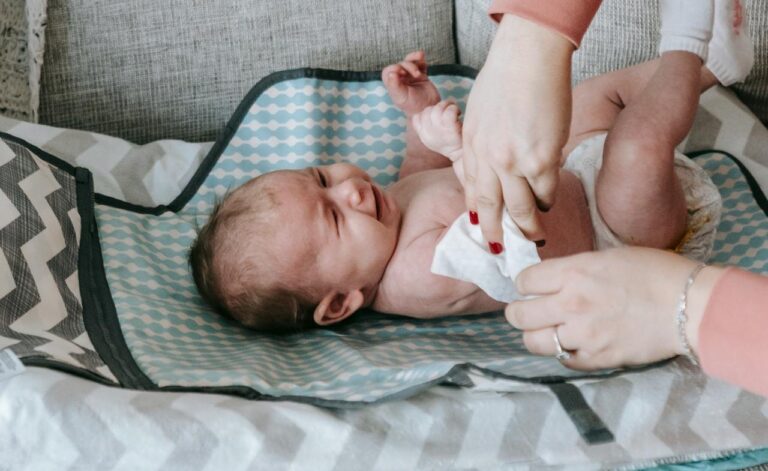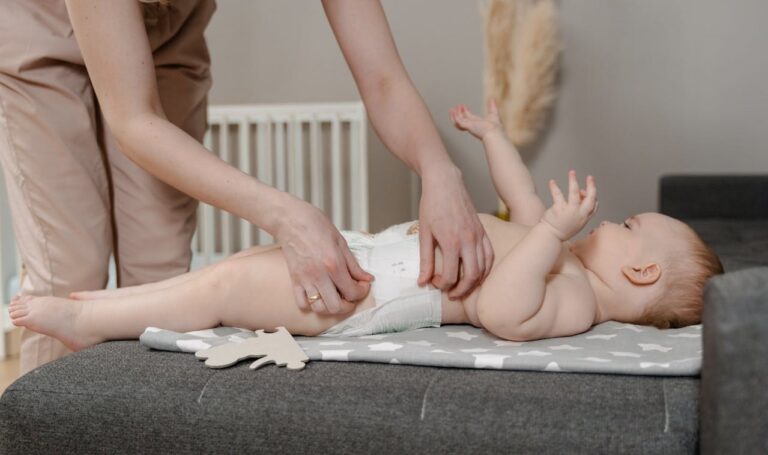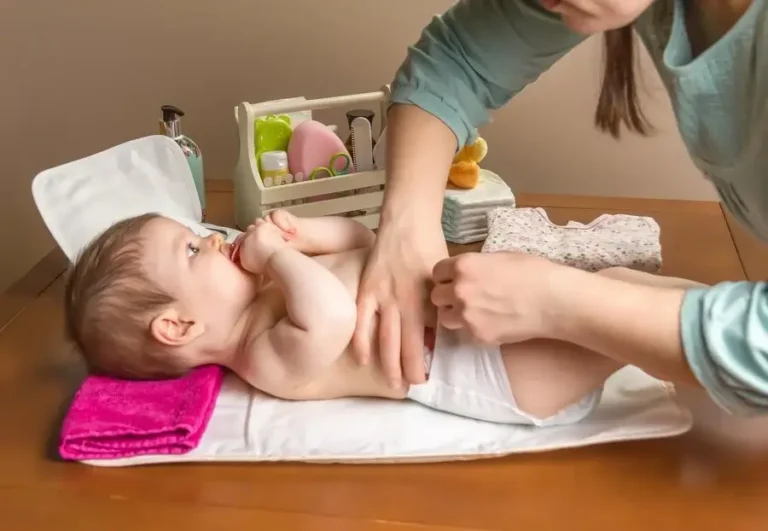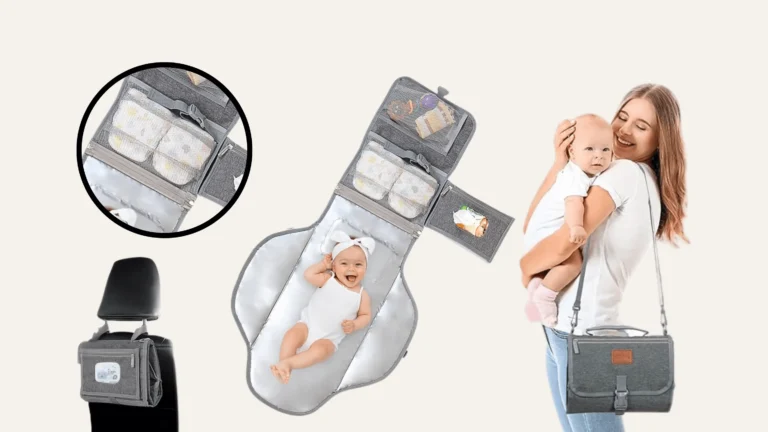Types of Baby Changing Pads: Find the Perfect Fit for Your Baby
Baby Changing Pads are handy for parents caring for young children because they offer a clean and comfortable place to change a diaper. However, with various companies offering their services, it can be difficult to choose the best option available.
Both options have variations with special characteristics to meet the users’ needs in terms of ease of carry, comfort, and safety. In this guide, we will discuss the different types of baby changing pads, their pros and cons, and a few factors to consider when selecting to allow you to make the right decision for you and your baby.
Types of Baby Changing Pads:
Table of Contents
1: Portable Changing Pads
Portable changing pads are for the on-the-go since sometimes a baby needs a diaper change outside the home. They are pretty commonly compact and collapsible and can be easily thrown into a diaper bag when a fresh, unique plane of sanitary contact is needed.
Key Features:
- Compactness
- Foldability
- Washability
- Lightweight
Ideal for:
Busy families, families that travel most of the time, and those that won’t have time to make changes in a more formal restaurant setting.
Pros:
They are extremely portable, can be carried in almost any bag, are cheap, and most are made from waterproof material.
Cons:
They are usually slimmer in design and maybe not as cushioned as the large pads.
2: Contoured Changing Pads
Contoured changing pads have raised sides to keep the baby in place, so it won’t roll from the pad easily. Many of the models have a non-slip base, so they will not slide along a dresser or a changing table, and many models fit most changing table models.
Key Features:
- Safety
- Non-slip and compatibility with changing tables are the additional features of the earlier versions with raised edges.
Ideal for:
Parents with a fixed place that may be converted into a nursery or anyone who prefers a more secure design that cannot be easily moved around.
Pros:
An added safety to the baby with added softness and support, can be washed if it is waterproof.
Cons:
Large must typically be kept in a special room or at least a special corner.
3: Disposable Changing Pads
Disposable changing pads are used for a short time only; they are not reusable. They are constructed from water-resistant and absorbent fabric. They are perfect for a short interchange without contact with other people in public washrooms or during car trips.
Key Features:
- Temporary
- Totes
- Water-resistant
Ideal for:
Rarely, during traveling, in case of some urgent circumstances, or during periods of high hygiene when it is impossible to wash.
Pros:
- Very clean
- It does not need washing
- Easy to throw away
- Serviceable when seldom employed
Cons:
- It may prove expensive for use several times
4: Waterproof Changing Pads
Waterproof changing pads, such as vinyl or TPU (thermoplastic polyurethane), retain their quality in water. They are very easy to clean and durable, preventing spillage or leakage from a diaper.
Key Features:
- Waterproof layers
- Easy to clean
Ideal for:
Parents who want smooth, simple maintenance and cleaning and are suitable to use every day.
Pros:
- It resists spots and dampness and will last long if treated correctly.
- Easy to clean
Cons:
- It can sometimes feel slick or less comfortable
5: Diaper Changing Pad Kits
One common component inherent in most of these all-embracing kits is a portable changing table with pockets for diapers and wipes, plus an additional pocket for other accessories. Therefore, these kits include everything required for a quick change and are suitable for parents who like everything well structured.
Key Features:
- Combines storage space
- It can fold and contains pockets for baby necessities
Ideal for:
Parents are the primary consumers of play clothes washers owing to their convenience and ability to accommodate dirty clothes for a change of air.
Pros:
- Very useful
- Takes such little space
- It has everything you might need right there
Cons:
- It is heavier than most portable pads and dimensional requirements may prevent compact and thin folds, as pockets hinder folding.
6: Organic Cotton Changing Pads
These pads reduce chemical contact for extra gentle skin, using only organic cotton and other naturally derived materials. The brands are predominantly hypoallergenic and appeal to parents who consider sustainability and baby-friendly materials.
Key Features:
- All-natural
- Environmentally friendly fabric
- Mainly of a non-allergic nature
Ideal for:
Parents who are concerned about the environment in which they live or parents who have babies with sensitive skin or allergies.
Pros:
- Hypo-allergic
- Requires minimal chemicals for washing
- Friendly to the environment
Cons:
- More delicate (needs hand washing or air drying)
- Costly
7: Memory Foam Changing Pads
These pads are made of thick memory foam, which has some viscoelastic properties. This means that it will take the shape of the baby and thus make the baby comfortable when in use. Reduced pressure on sensitive body areas makes the baby more relaxed, especially during diaper changes.
Key Features:
- Memory foam padding
- Baby’s shape
- Comfortable
- Cushioned
Ideal for:
Families that are concerned with the comfort of the baby during diaper changes.
Pros:
- Extremely comfortable and providing excellent support
- Perfect for squirming babies
Cons:
- Generally more costly, and some are not water resistant.
8: Anti-Roll Changing Pads
Anti-roll changing pads include extra safety measures, such as high and contoured edges or integrated harnesses, to ensure that a baby who loves to move during diaper changing is well protected.
Key Features:
- High sides
- A much-used anti-roll design
- Harness for safety
Ideal for:
It will be of value to parents who prefer their children to be as safe as possible, especially those with active or mobile infants.
Pros:
- Safety for the active moving babies
- Security for parents
- Physically sound product
Cons:
- Large in size
- Immobile
Comparison Table: Comparing Baby Changing Pads for New Parents
| Type | Key features | Pros | Cons | Ideal For |
| Portable Changing Pads | Lightweight, foldable, compact | Convenient for travel, fits in most bags, easy to clean | Limited Padding | Travel-focused families |
| Contoured Changing Pads | Raised edges, Non-slip base | Secure, comfortable, ideal for dedicated changing tables | Bulky, not Portable | Nursery setups |
| Disposable Changing Pads | Single-use, Waterproof | Extremely hygienic, no cleaning needed, convenient | Costly if used frequently | Travel or emergencies |
| Waterproof Changing Pads | Water-resistant material | Quick to clean, protects surfaces from spills | It can feel less comfortable, | Low-maintenance users |
| Diaper Changing Pad Kits | Storage compartments | All-in-one convenience, extra storage for essentials | Heavier, may not fit in smaller bags | Outdoor or organized changes |
| Organic Cotton Changing Pads | Eco-friendly, Hypoallergenic | Gentle on the skin, reduce chemical exposure, eco-friendly | Higher maintenance can be costly | Eco-conscious families |
| Memory Foam Changing Pads | Soft Memory Foam | Extremely comfortable, reduces pressure on baby | Heavy, more expensive, | Comfort-seeking parents |
| Anti-Roll Changing Pads | High sides, harness, secure design | Extra safety for active babies, Prevents rolling | Bulky, not portable, dedicated station required | Safety-prioritizing parents |

Key Features to Consider When Choosing a Changing Pad:
Portability:
Consider how frequently you will take the changing pad out of the house. Affordable, foldable pads are perfect for families needing them while travelling.
Comfort:
Regarding comfort, memory foam or contoured pads are usually the most desired support solutions.
Safety Features:
Other features, such as raised edges, harnesses, or anti-roll designs, will ensure the baby is safe and won’t roll off during diaper changes.
Material and Maintenance:
Select fabrics that can be washed easily, such as water-resistant material, or use natural, non-allergic fabrics if your baby has skin sensitivity.
Eco-Friendliness:
Concerning these characteristics, environmentally aware families should prefer organic cotton or reusable and washable pads.
How to Choose the Right Changing Pad for Your Needs:
The choice of this developmental pad has to do with one’s lifestyle, what matters most to the mother/baby duo, and individual preferences. For instance:
Busy, On-the-Go Families:
A changing pad that can be easily carried around, folded, or disposable may be ideal.
Families with Dedicated Changing Stations:
Contoured or anti-roll changing pads provide extra safety technologies to give pad support.
Parents Focused on Comfort:
Memory foam changing pads offer the baby a soft and comfortable area to set him/her on.
Eco-Conscious Families:
Choose the baby changing pads made of organic cotton, as these altering pads are hypoallergenic and 100 % natural. It is about your home environment, the frequency with which you will have to move the pad, and any requirements, for example, if the baby has delicate skin.
Maintenance and Care Tips: Easy Steps for Changing Pad Hygiene
Conclusion: A Guide to Different Types of Baby Changing Pads
Selecting a baby changing pad requires consideration of factors such as parents’ convenience, comfort in using the pad, and safety of the baby. The main difference is that the benefits of the different types are different, but the disadvantages are also other, so think about what type may be better suited to your life. Whether portable, made of environment-friendly material, or offers extra luxury, the perfect changing pad can make every diaper change easier and more comfortable for you and the little one.

